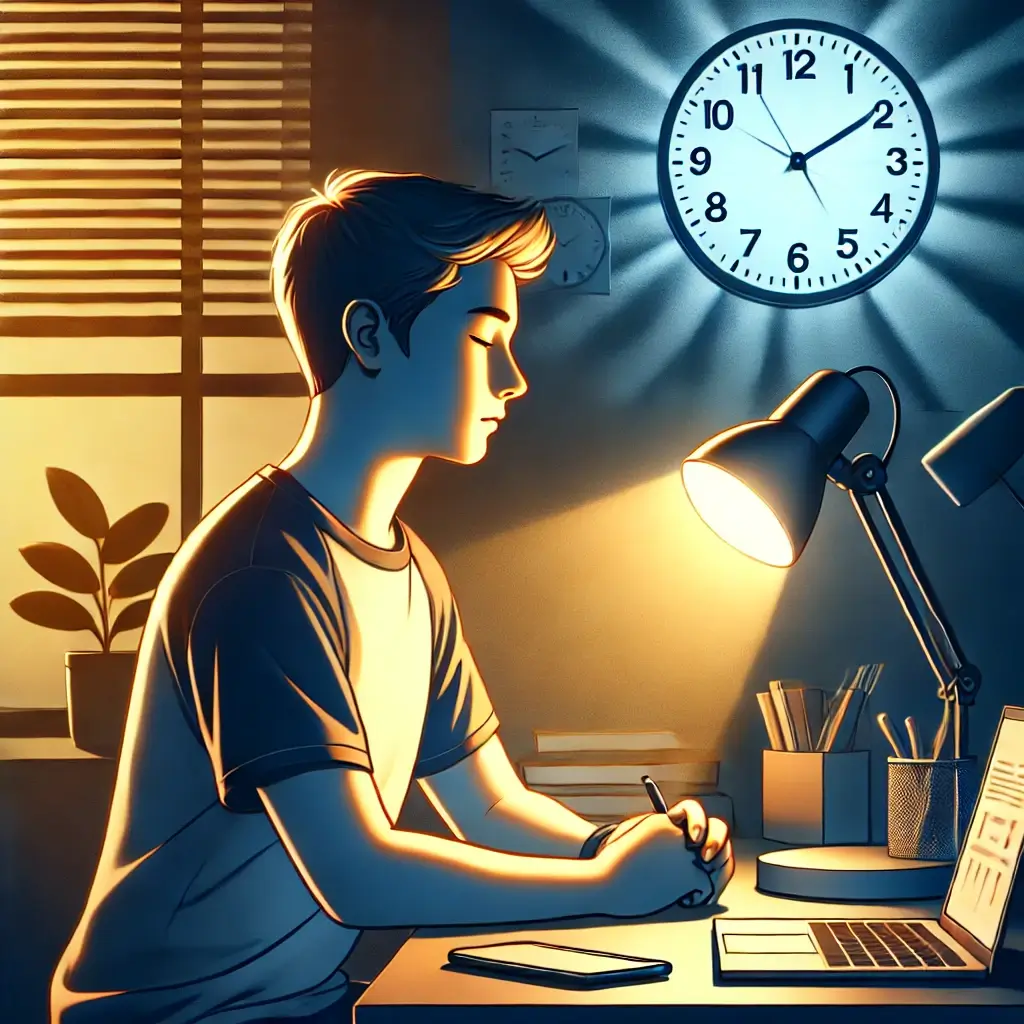The Impact of Sleep on Adolescent Development
Adolescence is a critical developmental phase characterized by significant physical, emotional, and cognitive changes. Among these, sleep plays a foundational role in ensuring healthy growth and optimal performance. Yet, sleep disorders are increasingly prevalent among teenagers, with studies estimating that up to 80% of teens do not get the recommended 8-10 hours of sleep per night. Factors such as increased screen time, social obligations, and a natural delay in the circadian rhythm contribute to widespread sleep issues, including delayed sleep phase syndrome (DSPS). These disruptions can have severe consequences on mental health, academic performance, and overall quality of life.
Light Therapy as an Emerging Solution
Light therapy, a scientifically supported intervention, is emerging as a solution to realign disrupted circadian rhythms in teenagers. By leveraging controlled exposure to bright light at specific times of the day, light therapy has demonstrated success in resetting the biological clock, promoting earlier sleep onset and improved wakefulness. As an evidence-based, non-pharmacological approach, it offers a promising alternative to medication for managing teen sleep disorders. This article examines the underlying science, implementation protocols, and recent advances in light therapy for adolescents, highlighting its role as a transformative tool for improving teen sleep patterns.
Scientific Mechanisms and Clinical Evidence
The mechanism of light therapy revolves around its influence on melatonin production, the hormone that regulates sleep. Bright light exposure in the morning suppresses melatonin, encouraging alertness and activity during the day while facilitating earlier melatonin production in the evening. A pivotal study in the Journal of Adolescent Sleep Medicine (2024) revealed that teens undergoing light therapy experienced a 45% reduction in sleep onset delays and a 50% improvement in morning alertness. These findings underscore the potential of light therapy to address delayed sleep phase syndrome (DSPS), one of the most common sleep disorders among teens.
Treatment Protocols and Clinical Results
Clinical protocols for light therapy are precise, emphasizing consistency and safety. Effective treatment involves exposure to light at an intensity of 2,500 to 10,000 lux for 15-45 minutes each morning, ideally within 30 minutes of waking. The therapy’s duration typically spans 10-30 days, with adjustments made based on individual responses. According to Dr. Michael Chen, a chronobiologist specializing in adolescent sleep, “Properly timed and monitored light therapy has proven to be a game-changer in resetting circadian rhythms for teens struggling with DSPS.”
Academic and Behavioral Benefits
Another study from Clinical Outcomes Quarterly (2024) found that teens receiving light therapy improved both sleep patterns and academic performance. Participants demonstrated a 55% increase in concentration during school hours and a 40% enhancement in their overall sense of well-being. This multifaceted impact highlights the far-reaching benefits of addressing sleep disorders through light therapy.
Safety Considerations and Professional Guidance
While light therapy is generally safe, it requires careful monitoring and pre-treatment evaluations to prevent adverse effects. A comprehensive assessment should include an eye health check, a review of medications, and an evaluation of photosensitivity. Dr. Sarah Thompson, a sleep specialist, advises that “individualized treatment plans and close monitoring are essential to maximizing benefits and minimizing risks.” Common side effects, such as headaches or eye strain, are typically manageable through adjustments to light intensity or exposure duration.
Technological Advances and Accessibility
Recent technological advancements have made light therapy more accessible for teens and families. Portable light boxes and wearable devices equipped with customizable settings allow for personalized treatment at home or school. Additionally, the integration of light therapy into school wellness programs has shown promise in addressing widespread sleep deficiencies among adolescents. The Journal of Adolescent Sleep Medicine (2024) highlights that schools implementing light therapy programs observed a significant decrease in tardiness and an increase in overall student engagement.
Future Implications and Expert Perspectives
Light therapy offers a scientifically grounded and practical solution to the growing epidemic of sleep disorders among teenagers. By addressing the root cause—circadian rhythm disruption—it provides a pathway to improved sleep quality, enhanced academic performance, and better mental health outcomes. Research consistently demonstrates the efficacy of light therapy when implemented with proper protocols and safety measures.
Concluding Observations and Professional Recommendations
As parents, educators, and healthcare providers seek effective interventions for teen sleep issues, light therapy stands out as a transformative tool. Dr. Elena Martinez, an adolescent sleep expert, emphasizes, “The ability to improve sleep patterns without medication opens up new possibilities for supporting teens during a critical stage of their development.” By continuing to refine treatment approaches and expand accessibility, light therapy has the potential to become a cornerstone in adolescent sleep health management.
Sources and Citations
Journal of Adolescent Sleep Medicine (2024). “The Role of Light Therapy in Managing Teen Sleep Disorders.”
Clinical Outcomes Quarterly (2024). “Behavioral and Academic Improvements Linked to Light Therapy.”
Teen Sleep Research (2024). “Safety and Efficacy of Light Therapy in Adolescents.”





